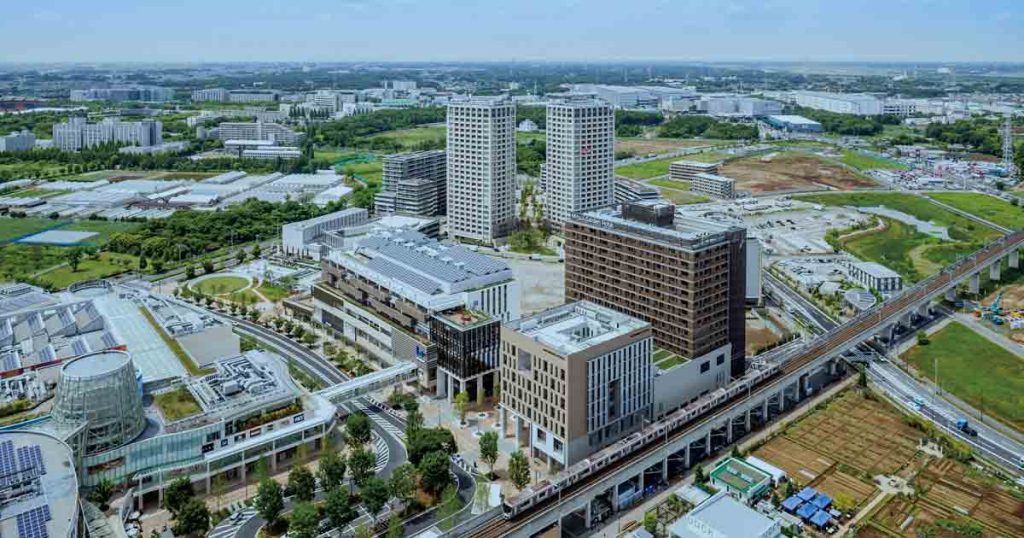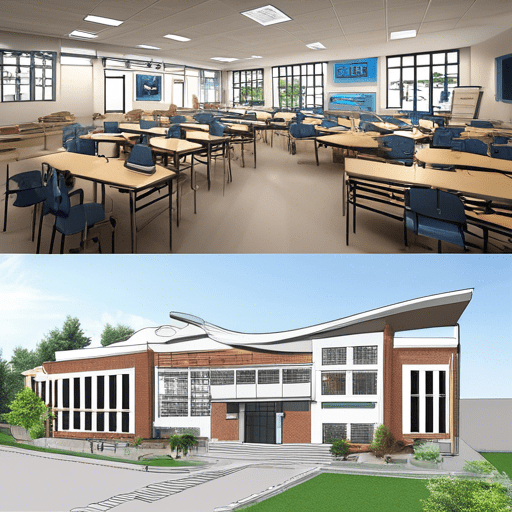Various activities happen at the same time in schools. That’s because school buildings consist of several spaces and rooms that
What is MEP in Smart Cities?
In the rapidly evolving landscape of urban development, the concept of smart cities is gaining traction worldwide. These cities integrate cutting-edge technology and data-driven solutions to enhance the quality of life for their residents. While the term “smart city” may conjure images of self-driving cars and sophisticated surveillance systems, there is an underlying component that is often overlooked: MEP (Mechanical, Electrical, and Plumbing) systems.
MEP refers to the integration of mechanical, electrical, and plumbing systems within a building or infrastructure. In the context of smart cities, MEP encompasses a wide range of technologies and systems that ensure the seamless functioning of essential services such as electricity, water supply, heating, ventilation, and air conditioning (HVAC). These systems are the backbone of a smart city, enabling the efficient management and utilization of resources.
Benefits of MEP in Smart Cities
The importance of MEP in smart cities cannot be overstated. These systems play a vital role in creating sustainable, livable, and technologically advanced urban environments. One of the key benefits of MEP is its ability to optimize resource usage. By implementing energy-efficient lighting, smart meters, and advanced environmental control systems, city authorities can monitor and manage resource consumption effectively. This not only reduces energy consumption but also minimizes waste, leading to cost savings and environmental sustainability.
Another significant advantage of MEP in smart cities is its contribution to operational efficiency. By integrating various MEP systems, cities can streamline their operations, improve maintenance processes, and enhance the overall performance of their infrastructure. For example, smart HVAC systems can automatically adjust temperature settings based on occupancy, reducing energy waste and improving comfort levels. Similarly, intelligent lighting systems can adjust brightness levels based on natural light, saving energy without compromising on safety or visibility.

Key components of MEP in Smart Cities
MEP systems in smart cities consist of several key components that work together to ensure the smooth operation of essential services. These components include:
- Electrical Systems: This includes the distribution of electricity, lighting, and power management systems. Smart electrical systems enable efficient energy usage, reduce power loss, and enhance safety through features such as intelligent lighting control and demand response capabilities.
- Mechanical Systems: This includes heating, ventilation, and air conditioning (HVAC) systems, as well as elevators, escalators, and other mechanical equipment. Smart mechanical systems use advanced sensors and algorithms to optimize energy consumption, improve indoor air quality, and enhance occupant comfort.
- Plumbing Systems: This includes water supply, drainage, and sewage systems. Smart plumbing systems help conserve water through features such as leak detection, automated irrigation, and water recycling. They also ensure efficient waste management and prevent contamination of water sources.
- Building Management Systems (BMS): BMS integrates and controls various MEP systems within a building or infrastructure. It allows for centralized monitoring, control, and optimization of energy usage, equipment performance, and occupant comfort. BMS also enables predictive maintenance, reducing downtime and extending the lifespan of MEP systems.
Case studies of successful implementation of MEP in Smart Cities
Several cities around the world have successfully implemented MEP systems as part of their smart city initiatives. These case studies highlight the tangible benefits and positive impact of MEP in creating sustainable and efficient urban environments.
- Barcelona, Spain: Barcelona has implemented a comprehensive smart city program that focuses on energy efficiency and sustainability. The city has integrated smart meters, advanced lighting systems, and intelligent HVAC controls to optimize energy consumption. As a result, Barcelona has reduced energy usage by 30% and has become a model for other cities looking to implement MEP systems.
- Singapore: Singapore is known for its innovative approach to urban development. The city-state has implemented smart grid systems, intelligent lighting, and water management systems to enhance resource efficiency. Singapore’s MEP initiatives have not only improved energy efficiency but also contributed to its goal of becoming a sustainable and resilient city.
- Copenhagen, Denmark: Copenhagen has embraced smart city technologies to create a more sustainable and livable urban environment. The city has implemented smart lighting systems, district heating networks, and water management systems to optimize resource usage. These initiatives have not only reduced energy consumption but also improved the overall quality of life for residents.
Challenges in implementing MEP in Smart Cities
While the benefits of MEP in smart cities are evident, there are several challenges that city authorities and stakeholders face when implementing these systems. These challenges include:
- Cost: Implementing MEP systems can be costly, especially for existing infrastructure. Upgrading and retrofitting buildings with smart technologies and sensors require significant investment. However, the long-term cost savings and benefits outweigh the initial expenses.
- Integration: MEP systems involve the integration of various components and technologies from different vendors. Ensuring seamless integration and interoperability can be a complex task, requiring coordination between different stakeholders and service providers.
- Data Privacy and Security: Smart MEP systems generate a vast amount of data that needs to be protected from unauthorized access and cyber threats. City authorities must implement robust security measures to safeguard sensitive information and ensure data privacy.
- Stakeholder Engagement: The successful implementation of MEP systems requires the collaboration and engagement of multiple stakeholders, including city authorities, building owners, technology providers, and residents. Ensuring effective communication and cooperation among these stakeholders is crucial for the seamless integration and operation of MEP systems.
Strategies for effective MEP implementation in Smart Cities
To overcome the challenges associated with implementing MEP systems in smart cities, several strategies can be employed:
- Long-term Planning: Developing a comprehensive long-term plan is essential for successful MEP implementation. This includes assessing the existing infrastructure, identifying areas for improvement, and setting clear goals and targets.
- Public-Private Partnerships: Collaborating with private sector companies can help cities access expertise, funding, and resources required for MEP implementation. Public-private partnerships can also facilitate knowledge sharing and foster innovation.
- Regulatory Frameworks: Establishing clear regulations and standards for MEP systems can streamline the implementation process and ensure uniformity across different projects. These frameworks should include guidelines for energy efficiency, interoperability, and data privacy.
- Education and Awareness: Creating awareness among stakeholders and residents about the benefits of MEP systems is crucial for their successful adoption. Education programs, workshops, and public campaigns can help promote understanding and support for smart city initiatives.
The role of technology in MEP in Smart Cities
Technology plays a pivotal role in enabling the implementation and operation of MEP systems in smart cities. Several tech-driven solutions are driving the advancement of MEP, including:
- Internet of Things (IoT): IoT enables the interconnection of various devices, sensors, and systems, allowing for real-time monitoring and control. IoT enables smart homes, smart grids, and smart infrastructure, enhancing the efficiency and sustainability of MEP systems.
- Artificial Intelligence (AI): AI algorithms can analyze vast amounts of data generated by MEP systems, identifying patterns and optimizing resource usage. AI-powered predictive maintenance can also help detect faults and minimize downtime, ensuring the continuous operation of MEP systems.
- Big Data Analytics: Big data analytics enables city authorities to gain valuable insights from the data generated by MEP systems. By analyzing this data, cities can identify areas for improvement, make data-driven decisions, and optimize resource allocation.
- Cloud Computing: Cloud-based platforms provide scalable and secure storage and processing capabilities for the vast amount of data generated by MEP systems. Cloud computing enables real-time monitoring, remote access, and centralized control of MEP systems.
Future trends and developments in MEP for Smart Cities
As technology continues to advance, several trends and developments are shaping the future of MEP in smart cities:
- Renewable Energy Integration: The integration of renewable energy sources, such as solar and wind, into MEP systems is becoming increasingly important. Smart cities are exploring innovative ways to generate and store renewable energy, reducing their reliance on traditional power sources.
- Energy Storage Solutions: The development of advanced energy storage technologies is crucial for the efficient utilization of renewable energy sources. Energy storage solutions, such as batteries and hydrogen fuel cells, enable the storage and release of energy when needed, enhancing the reliability and stability of MEP systems.
- Decentralized Energy Systems: Smart cities are moving towards decentralized energy systems, where energy generation and distribution occur at a local level. Decentralization reduces transmission losses and increases the resilience of MEP systems, enabling cities to become more self-sufficient.
- Digital Twin Technology: Digital twin technology creates virtual replicas of physical assets, allowing for real-time monitoring, analysis, and optimization. Digital twins enable predictive maintenance, performance monitoring, and simulations, improving the efficiency and reliability of MEP systems.
Conclusion: The importance of MEP in building sustainable and efficient Smart Cities
In conclusion, MEP systems play a pivotal role in the development of smart cities. These systems are critical in ensuring the seamless functioning of essential services and enabling the efficient utilization of resources. By integrating MEP technologies, cities can enhance energy efficiency, reduce waste, and improve overall operational efficiency. However, the implementation of MEP systems in smart cities comes with its own set of challenges, including cost, integration, and data security. By employing effective strategies, leveraging technology, and fostering collaboration among stakeholders, cities can overcome these challenges and build sustainable and efficient urban environments. The future of MEP in smart cities holds tremendous potential, with trends such as renewable energy integration, energy storage solutions, decentralized energy systems, and digital twin technology shaping the way forward. As cities continue to evolve, MEP will remain a crucial component in achieving the vision of smart, sustainable, and technologically advanced urban environments.




About Author
Xhuljo Jakup